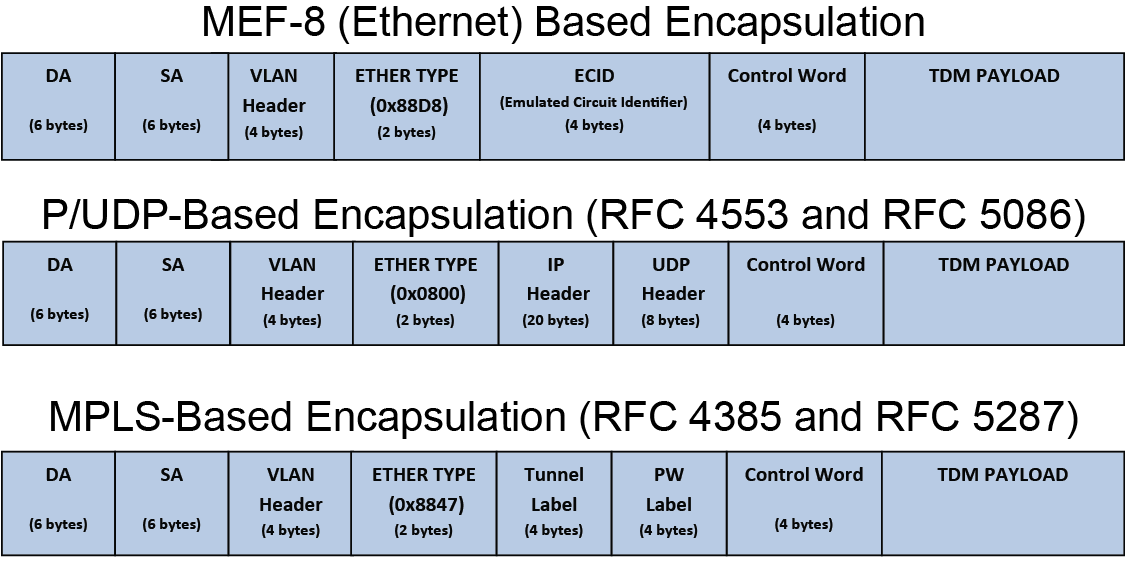Time-Division Multiplexed circuits can be transported through pseudowires (TDM PWE) using tunnels based on Ethernet, IP/UDP or MPLS. A pseudowire is an emulation of point-to-point circuit over a Packet Switching Network (typically Ethernet). It emulates the operation of a “transparent wire” carrying the service. This method of transporting TDM circuits over a Packet Switching Network is also known as Circuit Emulation Service (CES).
This feature is available only on the E4G-400 and E4G-200 cell site routers.
Ethernet Pseudowires: When the service being carried over the “wire” is Ethernet, it is referred as Ethernet Pseudo-wires. L2VPN is an example of Ethernet Pseudowires.
TDM Pseudowires: When the service being carried over the “wire” is TDM, it is referred as TDM Pseudowires.
Cell Site: This is the Radio Access Customer Network Edge, and refers to that part of the Mobile network that includes 2G (T1/E1 Connectivity), 3G and 4G radio towers.
Cell Site Router: The Cell-Site Router backhauls the traffic from the radio towers over the Ethernet network. Several 2G, 3G, and 4G radio towers can be connected to the Ethernet mobile backhaul at the same time through the Cell Site Router.
Cell Site Aggregation Router: This router aggregates multiple Ethernet links from various Cell Site Routers as well as the T1/E1 links (that are co-located with it), and transports them over the Mobile core. It is likely that Cell Site Aggregation routers are connected to each other through multiple synchronous Gigabit Ethernet rings.
Base Station Control: Terminates TDM pseudowires and hand-off cell site (TDM/ATM) traffic to BSC/RNC devices.
The figure below shows the components involved in supporting TDM pseudowires.
TDM pseudowires can be realized as structure-agnostic transport, or SAToP (RFC4553), and structure-aware transport (RFC5086) of TDM circuits. The components involved in both the types of pseudowires are mostly similar. In the following figure, PW#1 and PW#2 are realized using structure-aware transport of TDM circuits, while PW#3 is realized using structure-agnostic transport of TDM circuit.CESoPSN: In this method, there is a structure awareness of the TDM bit streams (signals), meaning the data that is encapsulated is NXDS0. This method has the benefit of lower packetization delay when transporting several timeslots. CESoP supports channel-associated signaling (CAS) for TDM interfaces.

Note
The Ethertype used for MEF-8 encapsulation is 0x88D8.

 Print
this page
Print
this page Email this topic
Email this topic Feedback
Feedback